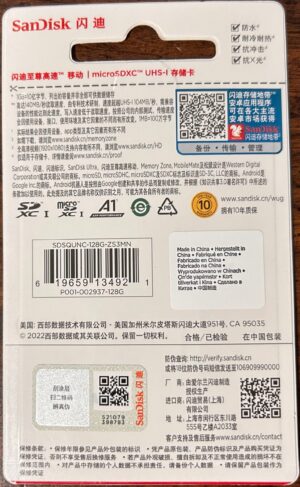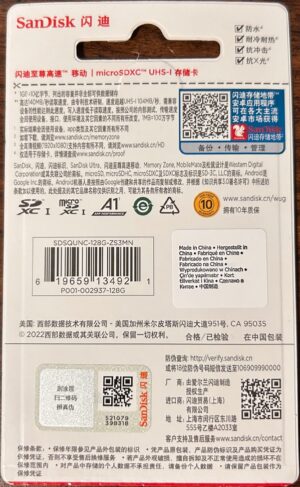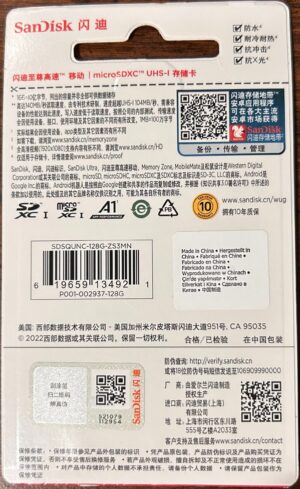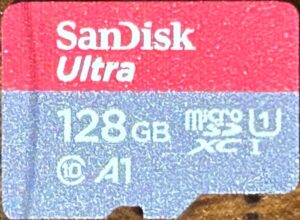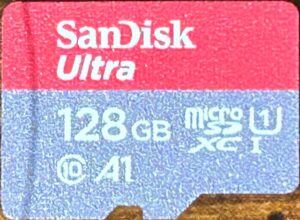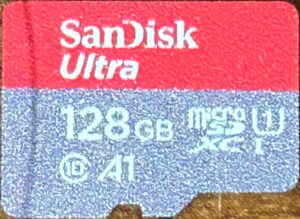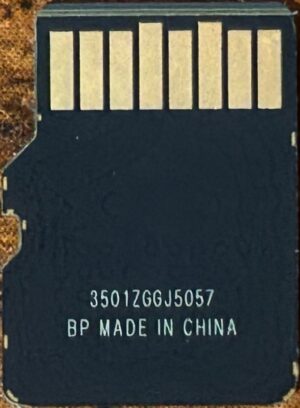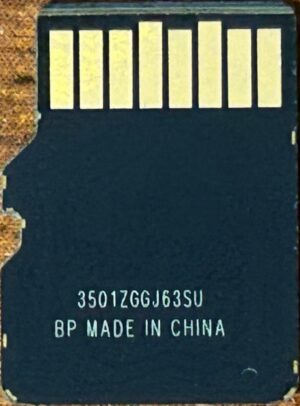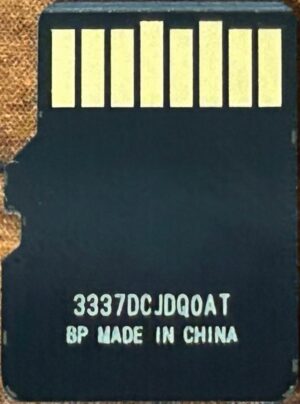- Obtained from: AliExpress
- Price paid: $14.58
- Advertised capacity: 128GB
- Logical capacity: 127,865,454,592 bytes
- Physical capacity: 127,865,454,592 bytes
- Fake/skimpy flash: Skimpy (0.11% skimp)
- Protected area: 134,217,728 bytes
- Adjusted skimp: 0.00026%
- Speed class markings: Class 10, U1*, A1
- CID data:
- Manufacturer ID:
0x03** - OEM ID:
0x5344(ASCII:SD)** - Product name:
0x5344313238(ASCII:SD128) - Product revision:
0x85
- Manufacturer ID:
* The U1 mark appears on the card, but does not appear on the product packaging.
** This manufacturer ID/OEM ID is pretty well known to be associated with SanDisk.
Discussion
I believe I picked up this one after seeing that SanDisk advertised performance differences between the 32 and 64GB versions of both the Extreme and the Extreme Pro, and I wondered if larger sizes of the SanDisk Ultra would show similar performance improvements when compared to its smaller siblings.
As it turns out, the answer was “yes”: this card did significantly better in sequential read speeds, and mildly better in sequential write speeds, than the SanDisk Ultra 32GB. Random read speeds were worse than the 32GB version, while random write speeds were about the same. Overall, two of the three samples got sequential read speeds that were more than two standard deviations above average, while the third came close. Sequential write speeds were right around average, and random I/O speeds (both read and write) were slightly above average.
On the endurance testing front:
- Samples #1 has survived 2,780 read/write cycles so far and has not yet experienced any errors.
- Sample #2’s first error was a single bit flip, in a single sector, during round 3,021. It has survived 3,343 read/write cycles in total so far.
- Sample #3 was doing just fine until round 1,327. During this round, it began experiencing almost constant I/O errors while trying to read back data. After about five days of this, it decided that it had had enough and stopped responding to commands altogether.
June 7, 2025





